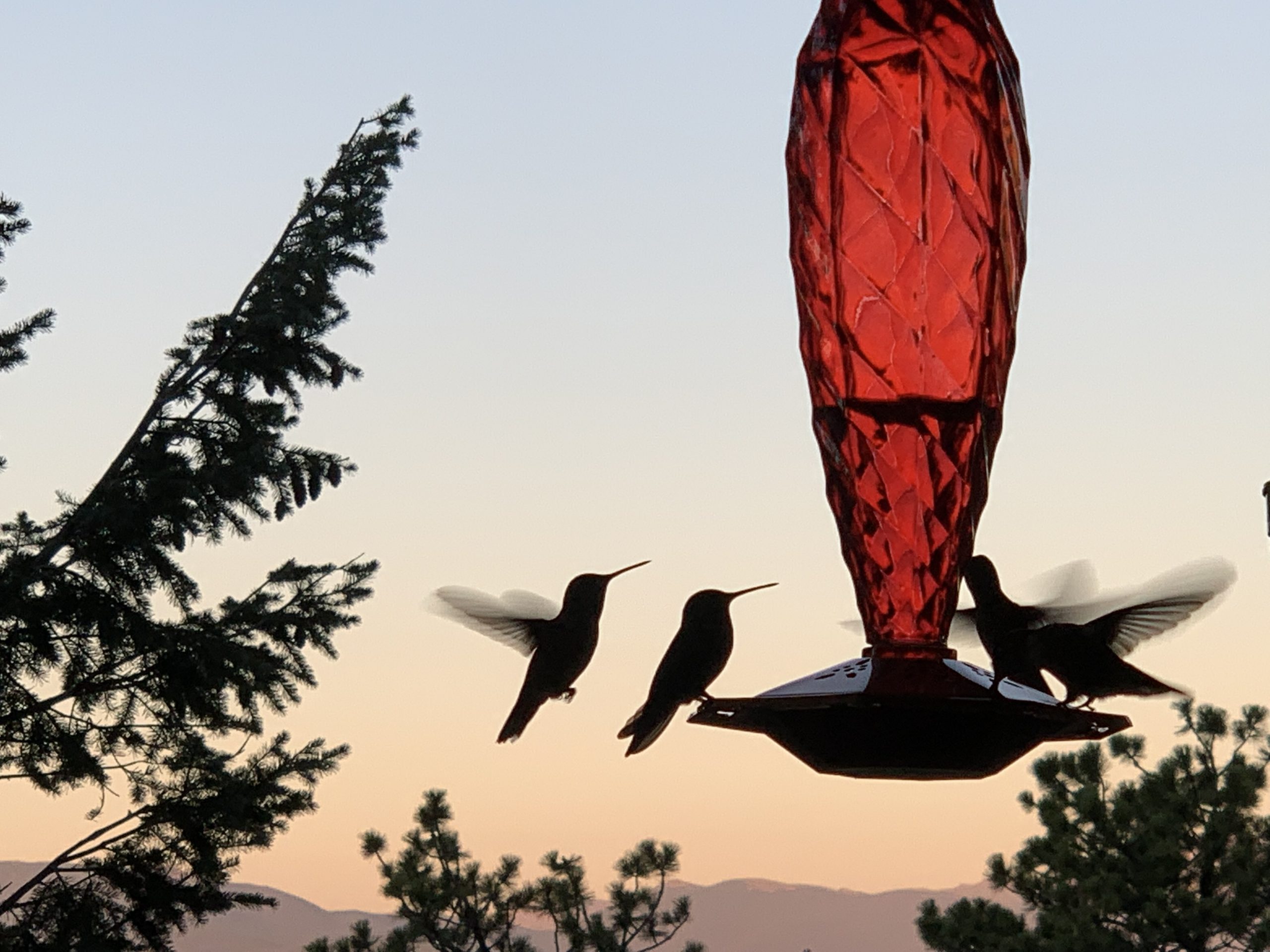Happy Hummingbirds
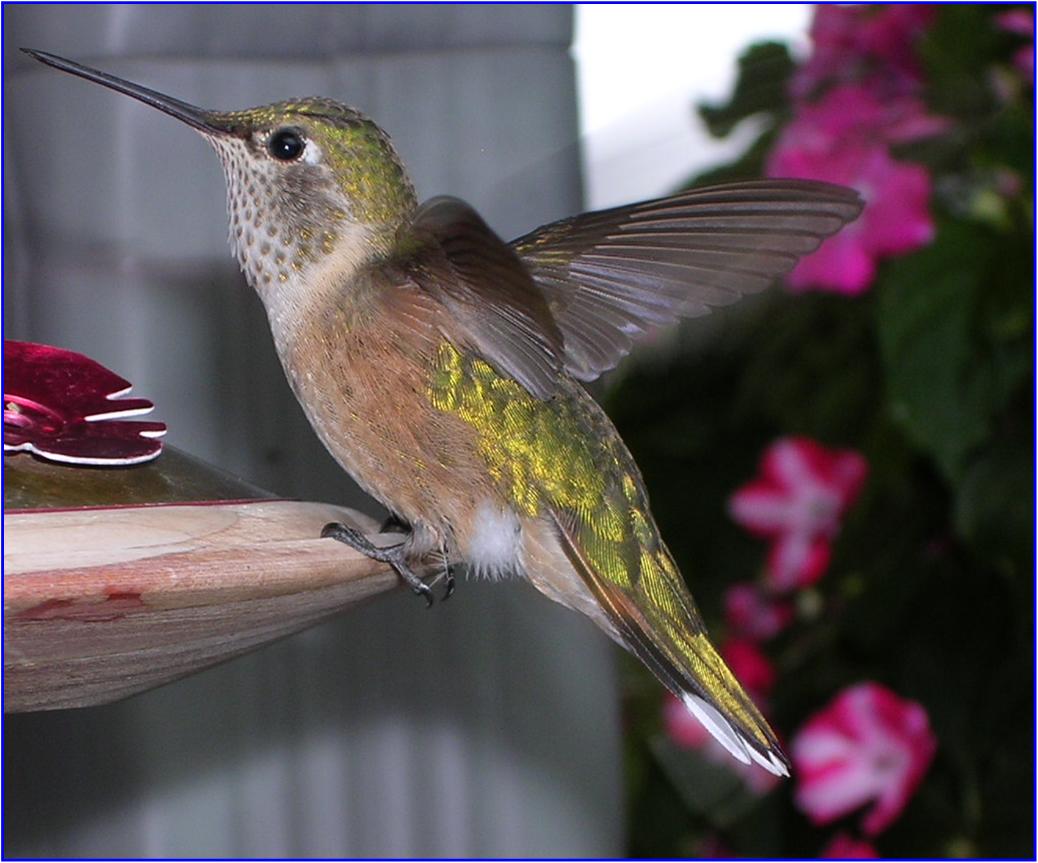
Hummingbirds are indeed a delightful sight to see in the foothills of Colorado. Colorado is home to several species of hummingbirds, which add vibrant colors and a touch of magic to the natural landscape. Here are a few hummingbird species commonly found in the foothills of Colorado:
- Broad-tailed Hummingbird (Selasphorus platycercus): This is one of the most common hummingbird species in Colorado. The males have vibrant green feathers, a red throat (gorget), and make a distinct buzzing sound during flight. They migrate to Colorado in late spring and stay throughout the summer.
- Rufous Hummingbird (Selasphorus rufus): Rufous hummingbirds are known for their reddish-orange feathers and aggressive nature. They have a long migration pattern and can be seen in Colorado during the summer months. They are frequent visitors to backyard feeders and flower gardens.
- Ruby-throated Hummingbird (Archilochus colubris): While the Ruby-throated Hummingbird is more commonly associated with the eastern parts of North America, it is occasionally seen in Colorado, including the foothills, during its migration. Males have iridescent green feathers and a vibrant ruby-red throat. Females have green feathers and a whitish throat. Ruby-throated Hummingbirds migrate through Colorado in the late spring and early fall, with some individuals stopping to refuel on nectar before continuing their journey. They are attracted to nectar feeders and various flowering plants.
These three hummingbird species add beauty and excitement to the foothills of Colorado. Providing a mix of native flowering plants and well-maintained nectar feeders can help attract and support their presence in your area.
To attract hummingbirds to your yard, you can provide nectar feeders filled with a sugar-water solution. Planting native flowers such as bee balm, columbine, penstemon, and trumpet vine also helps attract hummingbirds with their nectar-rich blooms.
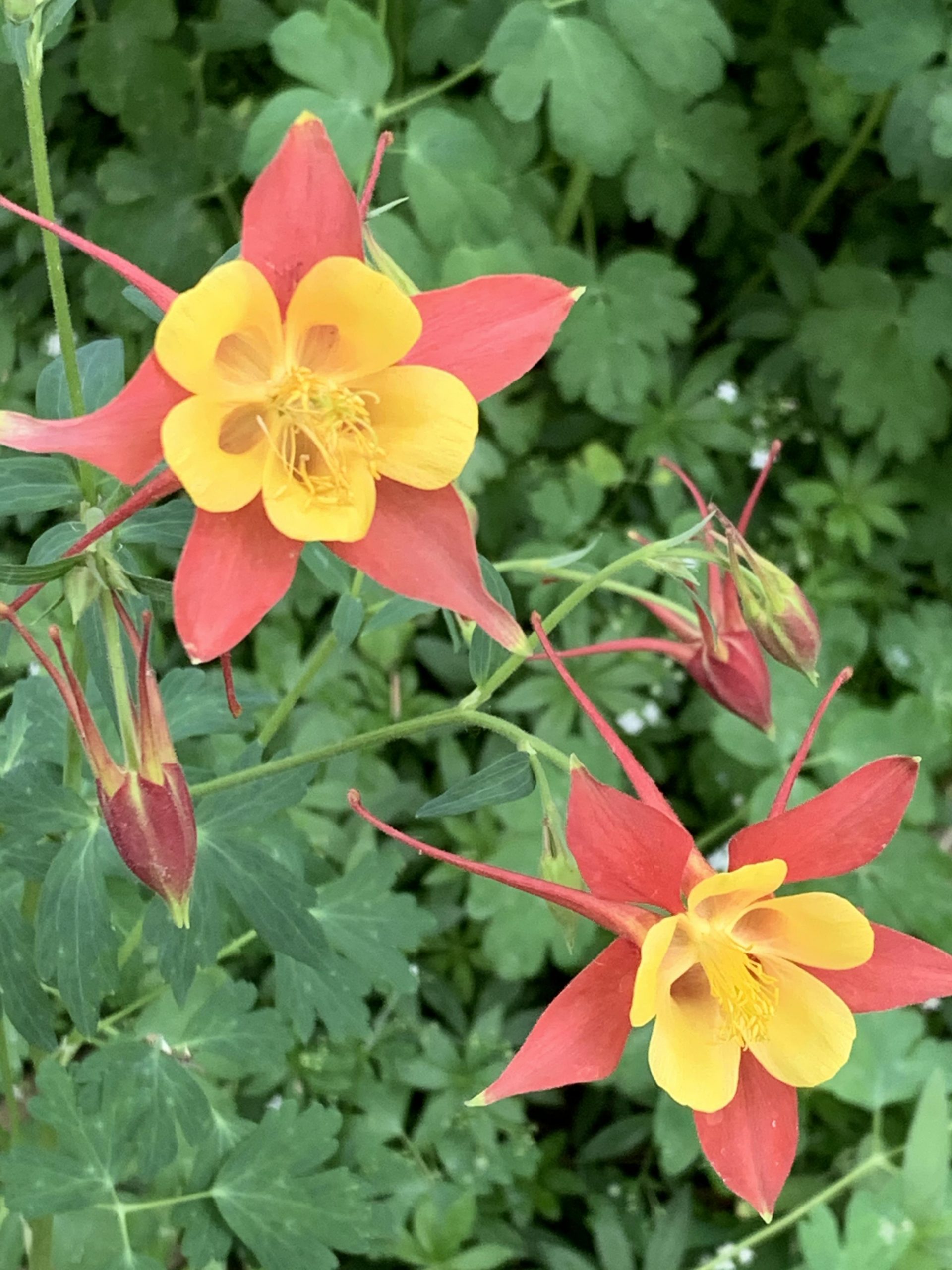 |
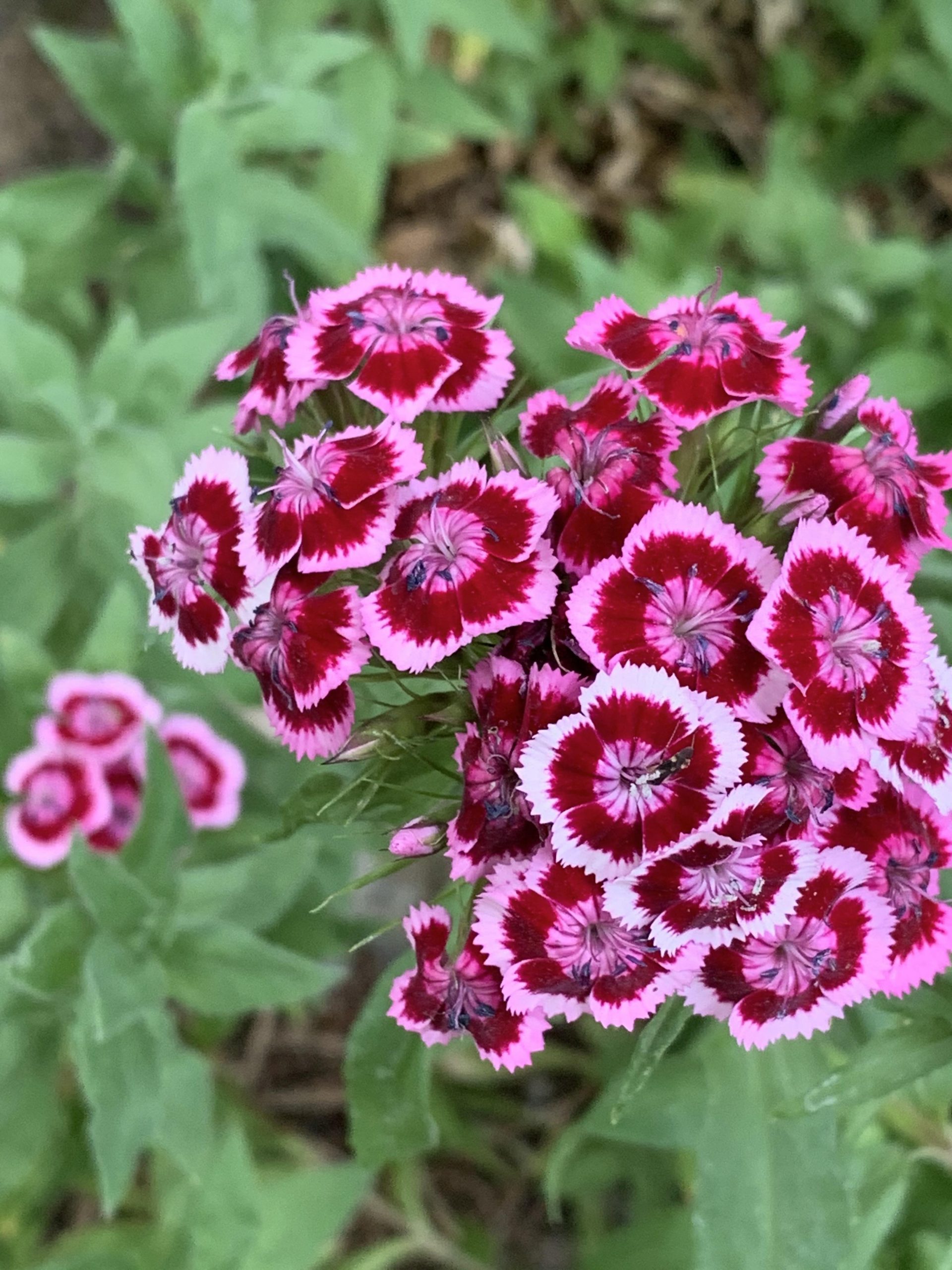 |
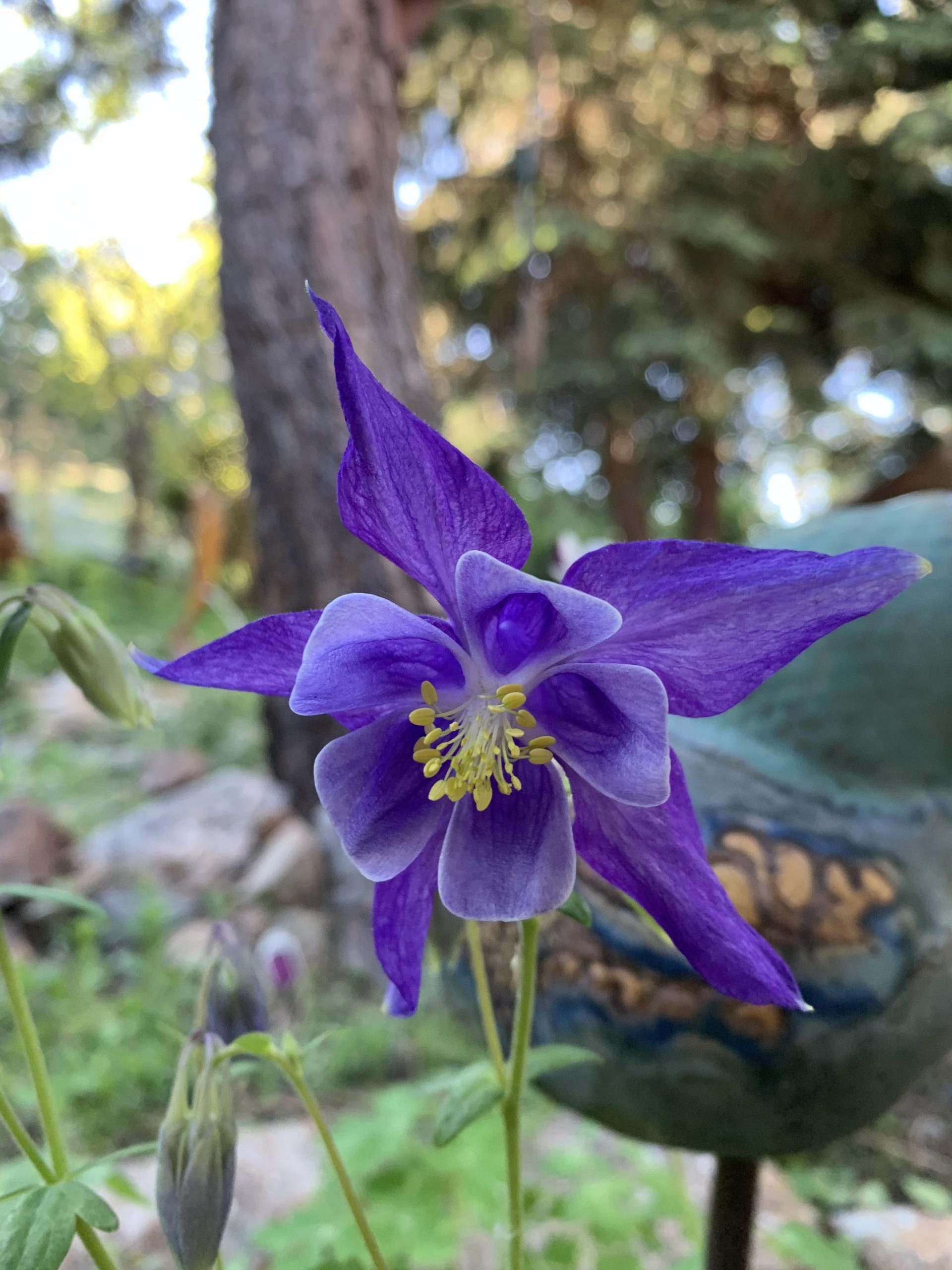 |
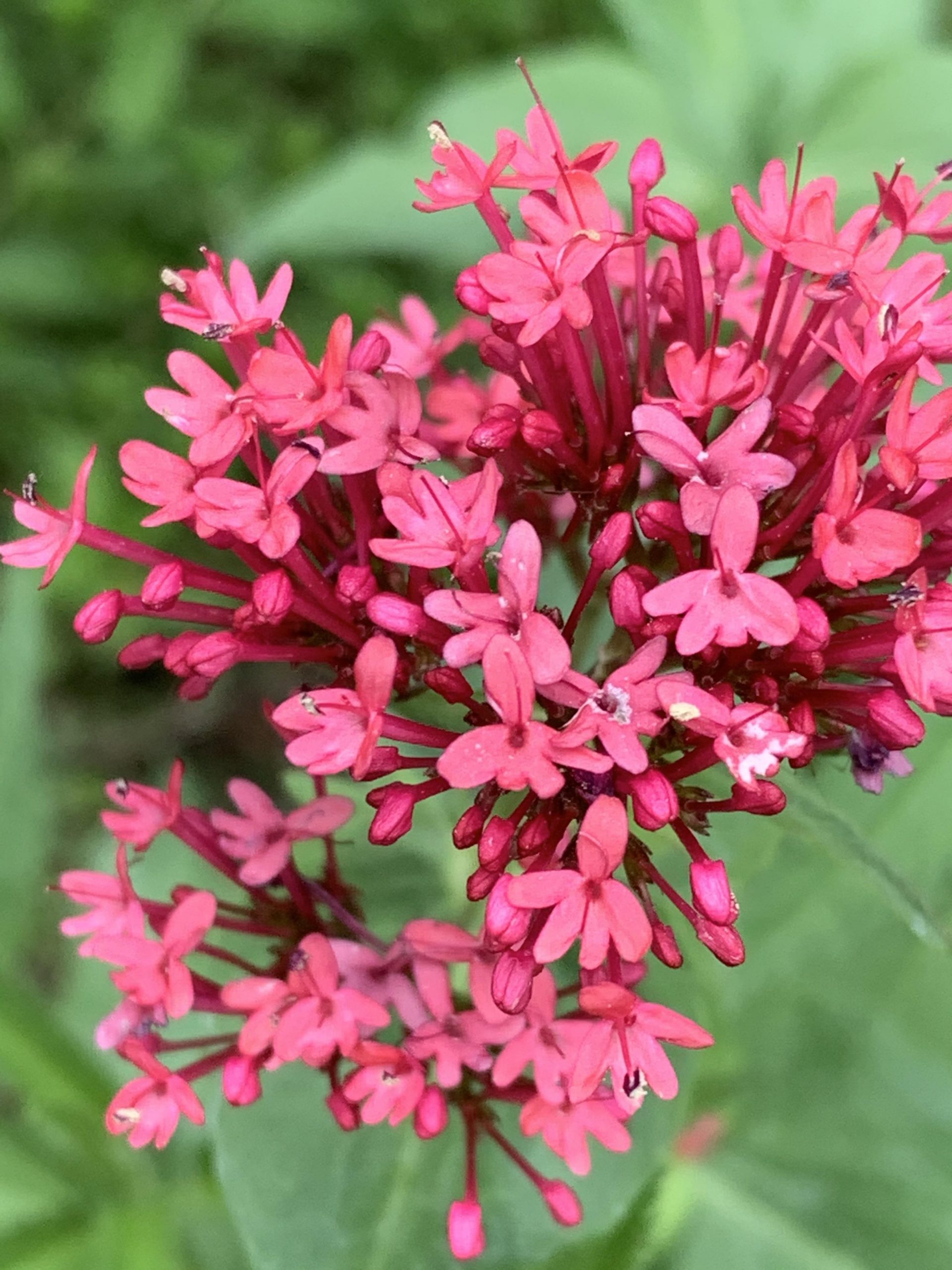 |
Remember, it’s important to keep the feeders clean and change the nectar regularly to avoid the growth of harmful bacteria. Additionally, providing a water source like a birdbath with shallow water can be appealing to hummingbirds.
The foothills of Colorado provide a diverse and suitable habitat for hummingbirds. Here are some key aspects of the habitat that attract and support hummingbird populations:
- Vegetation: Hummingbirds are attracted to areas with a variety of flowering plants. Native wildflowers, shrubs, and trees that produce nectar-rich blooms are particularly appealing. In the foothills of Colorado, you can find species such as bee balm, penstemon, columbine, scarlet gilia, and trumpet vine (hummingbird carpet), which are all attractive to hummingbirds. They also love hanging baskets of Fuchsia.
- Elevation: Colorado’s foothills encompass a range of elevations, typically between 5,000 and 8,000 feet. Different hummingbird species have varying elevation preferences. For example, the Broad-tailed Hummingbird is commonly found at mid to higher elevations, while the Rufous Hummingbird can be seen at both lower and higher elevations. The availability of diverse elevations in the foothills allows for a broader range of hummingbird species.
- Water Sources: Hummingbirds require access to water for drinking and bathing. Natural water sources like streams, creeks, and small ponds are beneficial for attracting hummingbirds. Additionally, providing a shallow birdbath or a misting fountain can be enticing to hummingbirds, especially during hot and dry periods.
- Shelter and Perches: Hummingbirds need perching spots and sheltered areas for resting and protection. Trees and shrubs provide ideal perching locations between feeding flights. They also offer protection from predators and harsh weather conditions. Native vegetation with dense foliage can serve as natural cover and nesting sites for hummingbirds.
- Insect Availability: While nectar is their primary food source, hummingbirds also rely on insects for essential nutrients. The presence of insects, such as small flies, spiders, and gnats, in the habitat supports the hummingbirds’ dietary needs.
Creating a hummingbird-friendly habitat in the foothills of Colorado involves planting native flowering plants, providing water sources, and maintaining natural cover. By offering a diverse and suitable environment, you can attract and support a variety of hummingbird species in your area.
 |
Feeders:
Hummingbird feeders can be a hub of activity and provide a great opportunity for observing hummingbirds up close. Here’s what you can expect to see at hummingbird feeders in the foothills of Colorado:
1. Feeding Visits: Hummingbirds are highly attracted to the sweet nectar in feeders. You can expect to see hummingbirds regularly visiting the feeders throughout the day, especially during the morning and evening hours when they are most active. They have incredibly fast wingbeats, allowing them to hover and feed from the tiny feeding ports on the feeder.
2. Territorial Behavior: Hummingbirds are known for their territorial nature, especially the males. You may witness aggressive behavior as they defend their feeding territory from other hummingbirds. This can include aerial chases, buzzing sounds, and display dives. It’s fascinating to observe their acrobatic maneuvers and the vibrant colors of their feathers during these territorial disputes.
3. Feeder Guarding: Some hummingbirds may actively guard a specific feeder, perching nearby and chasing away intruders. This behavior can continue throughout the day as they establish dominance over the feeder and protect their food source.
4. Flock Gatherings: While hummingbirds are generally territorial, you might occasionally witness small groups or “flocks” of hummingbirds peacefully feeding together at a large and abundant food source. This can happen during migration or when there is an ample supply of nectar.
5. Feeder Refills: Depending on the activity level of hummingbirds in your area, you may need to refill the feeder regularly. Hummingbirds have high metabolisms and need to consume a substantial amount of nectar each day, so it’s not uncommon for them to quickly deplete the nectar in feeders.
Observing the activity at hummingbird feeders in the foothills of Colorado can be an exciting and rewarding experience. Make sure to keep your feeders clean and the nectar fresh to attract and support these beautiful and energetic birds.
Mating and nesting are essential aspects of the hummingbird lifecycle. Here’s some information about hummingbird mating and nesting in the foothills of Colorado:
 |
 |
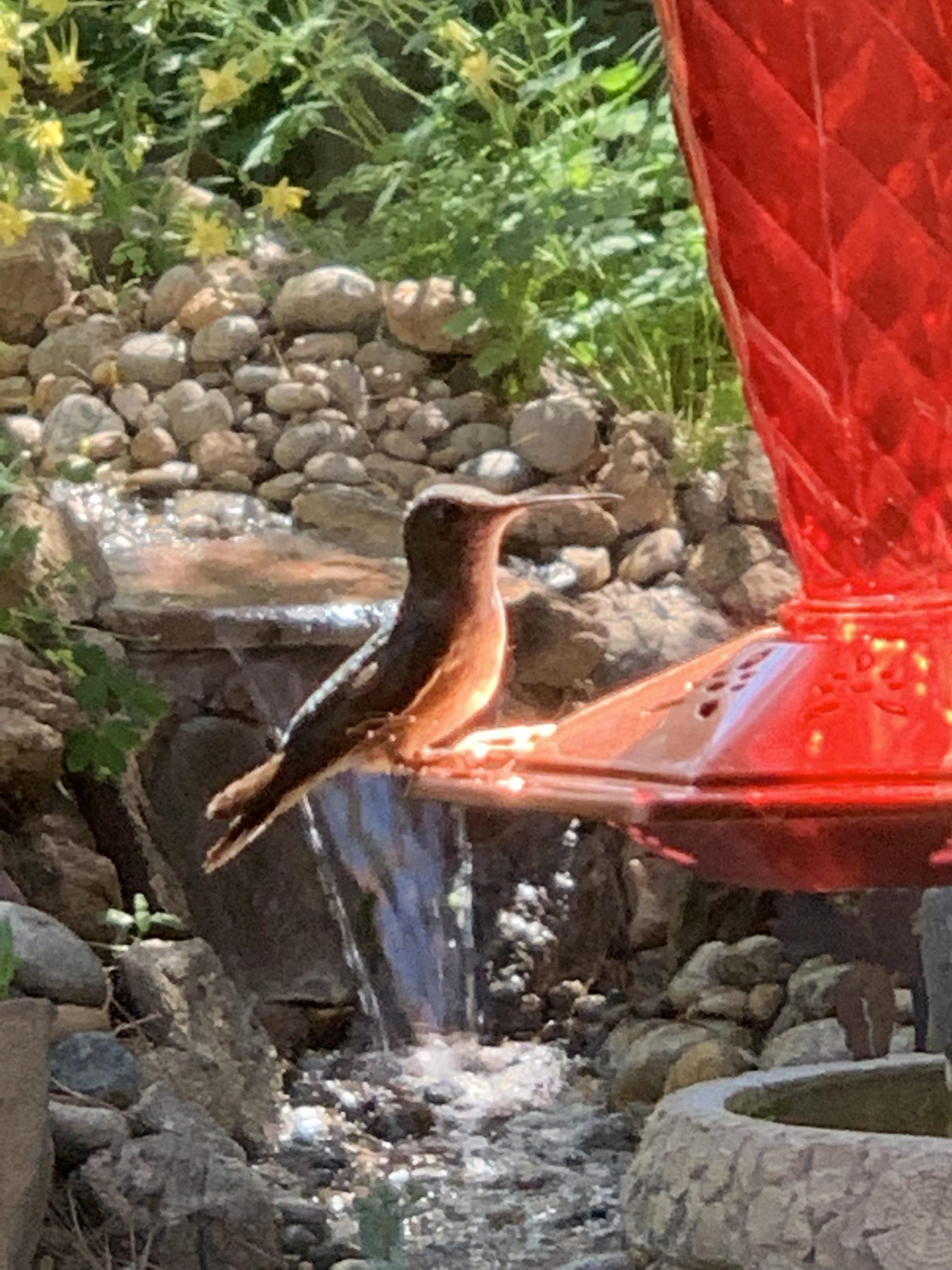 |
Mating:
Hummingbirds engage in elaborate courtship displays to attract mates. The male hummingbirds typically perform aerial displays, which involve flying high into the air and then diving down in a U-shaped pattern while producing buzzing or chirping sounds with their wings. These displays showcase their vibrant feathers and agility.
Once a female is attracted, the male hummingbird may perform further courtship rituals, such as flying in a figure-eight pattern or chasing away other males from their territory. If the female is receptive, she will signal her interest by perching nearby and allowing the male to approach.
Nesting:
After mating, female hummingbirds take on the sole responsibility of building nests and raising their young. The nests are small, cup-shaped structures made of various materials, including plant fibers, moss, spider webs, and lichens. They are typically built on tree branches or other sturdy structures, often near a reliable food source.
The female lays one to three eggs, which are tiny and about the size of a pea. She incubates the eggs for approximately 14 to 23 days, depending on the species. During this time, the male may assist by providing food for the female.
Once the eggs hatch, the female feeds the chicks a diet of regurgitated nectar and small insects to ensure they receive the necessary nutrients for growth. The young hummingbirds develop rapidly, and within three weeks, they are ready to leave the nest and start exploring their surroundings.
It’s important to avoid disturbing hummingbird nests during the nesting period to ensure the well-being and survival of the chicks. Providing a safe and undisturbed habitat with suitable food sources and natural cover can support the nesting efforts of hummingbirds in the foothills of Colorado.
Observing the mating rituals and witnessing the nesting activities of hummingbirds can be a fascinating and rewarding experience for nature enthusiasts in Colorado’s foothills.
Enjoy the beauty and grace of hummingbirds as they visit the foothills of Colorado!
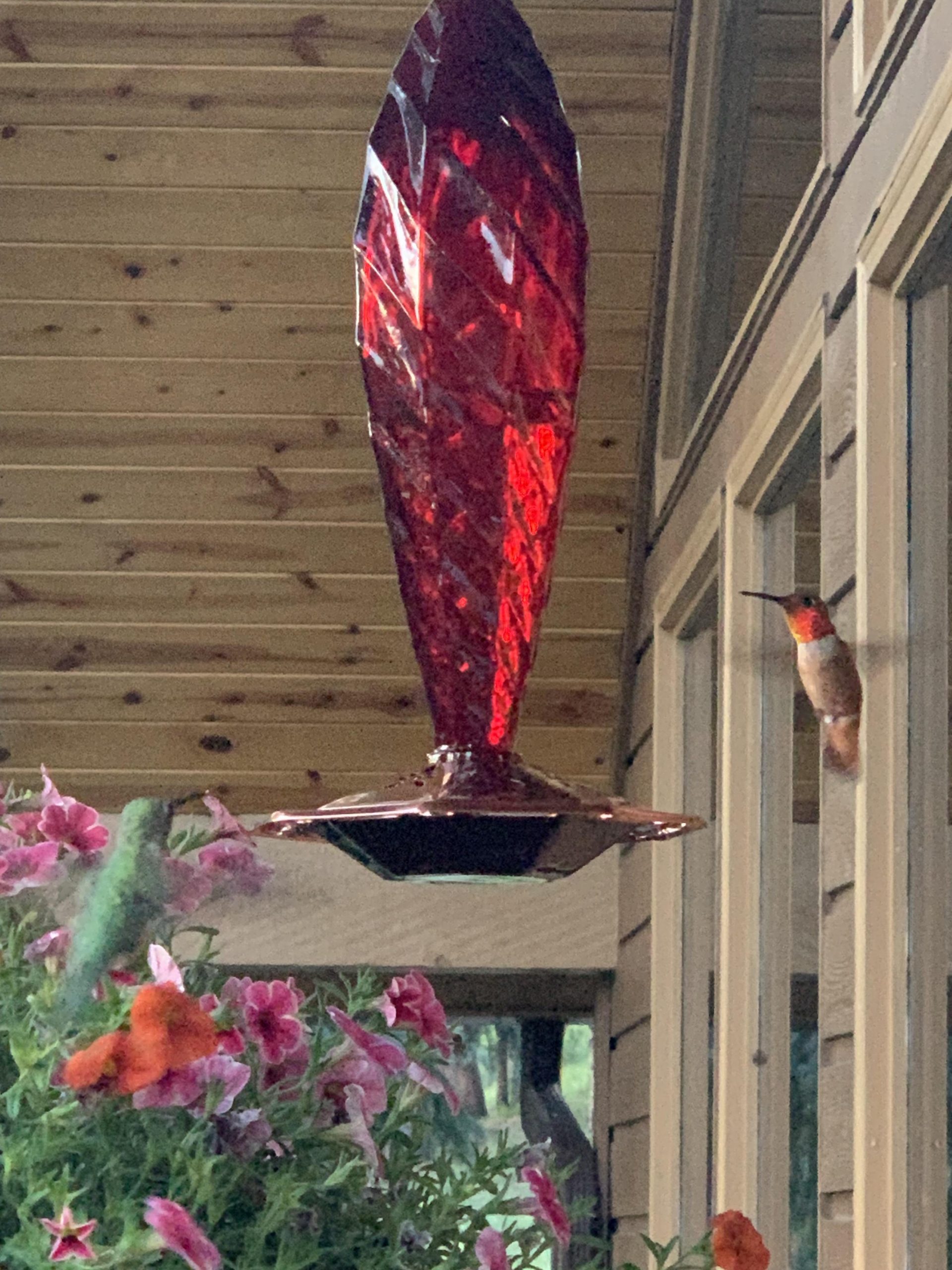 |
 |
 |

 Facebook
Facebook
 X
X
 Pinterest
Pinterest
 Copy Link
Copy Link
